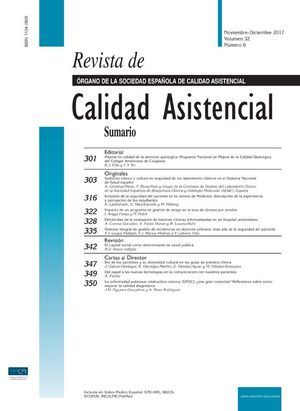Advances in surgery during the last half of the 20th century were spectacular. Major improvements in survival and quality of life were achieved because of cataract treatment, hip replacement, and organ transplantation. In addition, minimally invasive and ambulatory surgery increased surgical productivity (interventions/costs) dramatically. But as in other areas of healthcare, the industrialization of care production worked reasonably well while there was plenty of room for improvement. Once at the top of the game, Donabedian never lies: the more we do, the worse it gets.
In the 21st century, structural failures leading to a cost crisis in healthcare have become apparent, magnified by factors such as a rampant scientific reductionism, silos of knowledge, the research reproducibility crisis,1 evidence-based medicine as an incomplete epistemology,2 Baumol's cost disease,3 and, finally, the SARS-CoV-2 pandemic. I will not blame demographic change for the increased demand of surgical care. Or at least not as the leading cause. Instead, emerging technologies that make procedures safer and less invasive, together with activity-based business models, have led to the overuse of interventions for patient groups that would not have been candidates for the procedure previously. This occurred without a rigorous evaluation of the results.
Consequently, surgical services are affected by the same issues that Muir Gray 4 described for healthcare services: unwarranted variability in quality and outcomes, adverse effects that cause harm to patients, waste of limited resources in activities that do not generate any value, inequity, and finally, lack of prevention. In addition, the industrialization of service provision, together with paternalism in professional practice, has generated two additional problems: patient depersonalization and professional burn-out. To better address these problems, it is necessary to fix surgical practice, which, as Jeffrey B. Matthews argued,3 is a combination of truth and truthiness (ideas that are believed to be true irrespective of whether they are true or not) in unknown proportions.
Transforming surgical practice towards value-based surgery should be achieved by finding new business models, changing culture, and the appropriate use of digital technology.
The current healthcare business model appeared in the Talmud for the first time: “The patient gives money to the doctor. He may heal. He may not heal.” Many centuries later, even after a scientific revolution, this model of funding healthcare destabilizes the entire system.
In 2010 Michael Porter published his famous New England Journal of Medicine article “What's value in healthcare?”.5 He defined value as outcomes that matter to patients divided by costs. This definition does not consider that value may be different for different stakeholders:
- 1.
Allocative value for system managers.
- 2.
Technical value for professionals.
- 3.
Personalized and population value for patients and society.
Practicing value-based surgery demands taking leadership and stewardship seriously. Surgeons must align themselves with related healthcare professionals, managers, and patients to agree on a “value-based” business model. A modification of Muir Gray's definition of personalized and population value can serve as a starting point:
Personalized and population value=(Benefit – Harm) x (Results that matter to the patient + Patient experience) / Costs (€+Time+CO2).
These factors would have to be defined, including patient-reported outcomes measurements (PROMs) and patient-reported experience measurements (PREMs), measured, assessed, and published. Simultaneously, a cultural transformation would be very much needed. First to reconcile Kant (categorical imperative) with Bentham (consequentialism). In addition, professional and knowledge silos should be broken down to establish networks and systems for care delivery. Improvements would have to occur to adequately translate evidence into surgical practice, share decisions, implement safe surgery initiatives, eliminate valueless interventions, and avoid misuse (over- and underuse) of resources. Finally, surgeons should be the stewards of resources available to deliver surgical care to the community.
Fully interoperable digital tools, better than those currently available, must be developed to capture high-quality data, both structured and unstructured. Digitization of surgical processes and advanced data analytics will contribute to:
- 1.
Accelerate learning and improve training (simulation).
- 2.
Support shared decision-making.
- 3.
Assist surgical teams in surgical planning and intraoperative navigation.
- 4.
Increase safety, precision, and accuracy of surgical procedures
- 5.
Evaluate results (PROMs, PREMs…).
- 6.
Simulate new solutions (digital twins)
- 7.
Take corrective action.
In summary, value-based surgery is a radical transformation aimed at improving surgical outcomes that matter to patients and populations through new business models, new culture, and interoperable digital technologies.







